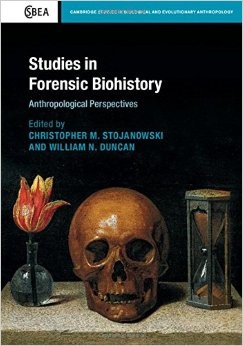
William N. Duncan
Professor of Anthropology and Associate Director of Undergraduate Research in Global Contexts, Honors College
- duncanwn@etsu.edu
- 423-439-6650
- Rogers-Stout Hall 223B
- About Dr. Duncan
- Bill Duncan is a biological anthropologist by training. He has worked at ETSU for over a decade and is in his fifth year serving as department chair. His research focuses on Mesoamerica, particularly the Maya area, dental anthropology, and forensic biohistory. When he is not at work he enjoys cycling, playing the guitar, and hiking with his family.
| Course Level | Course Name |
|---|---|
|
Undergrad |
Introduction to physical anthropology |
|
Undergrad |
Forensic anthropology |
|
Undergrad |
Paleoanthropology |
|
Undergrad |
Race and human variation |
|
Undergrad |
The Aztec, Maya and their neighbors |
- CURRENT RESEARCH
- My primary research emphasis is Mesoamerican bioarchaeology, which is to say I study human remains from archaeological sites in northern Central America and Mexico. This covers a range of topics including issues microevolution, trauma and taphonomy, cultural modification, mortuary practices, and indigenous ideas about embodiment. My particular interests include identifying evidence of violence among individuals buried in distinct ritual contexts among the Maya, Mixtec, and Zapotec cultures and understanding biological relationships among individuals subjected to ritual violence. In addition to my work in Mesoamerica I am currently involved in a historical forensics case as a part of the canonization process of a martyred 16th century Spanish priest and a study of dental morphology among populations in the United States.
- RECENT GRANTS
-
- 2011 National Science Foundation - $250,000
Integrating developmental morphogenetic theory with dental biodistance practices
CM Stojanowski, WN Duncan, J Femiani, GR Scott
- 2008 NSF-Research Experiences for Undergraduates - $7,950
- REU Supplementary grant for BCS #0640170
AK Balkansky, WN Duncan
- 2007 National Science Foundation - $176,222
The archaeological precursors of the Mixtec civilization.
AK Balkansky, WN Duncan
- 2011 National Science Foundation - $250,000
- SELECTED PUBLICATIONS
-
BOOKS:
2016 Stojanowski, CM, WN Duncan. Editors. Studies in Forensic Biohistory: Anthropological Perspectives. Cambridge Studies in Biological and Evolutionary Anthropology. Cambridge University Press.
JOURNAL ARTICLES:
- 2017 Stojanowski, CM, Paul, K, Seidel, A, Duncan, WN, Guatelli-Steinberg, D. Heritability and genetic integration of tooth size in the South Carolina Gullah. American Journal of Physical Anthropology. American Journal of Physical Anthropology 164(3):505-521.
- 2015 Stojanowski, CM, WN Duncan. Engaging bodies in the public imagination: Bioarchaeology as social science, science, and humanities. American Journal of Human Biology. 27:51-60.
- 2015 Duncan, WN, K Schwarz. A Postclassic Maya mass grave from Zacpetén. Journal of Field Archaeology 40(2) 143-165.
- 2014a Duncan, WN, K Schwarz. Partible, permeable, and relational bodies in a Maya mass grave. Commingled and disarticulated human remains: working towards improved theory, method and data. A Osterholtz, K Baustian, D Martin (eds), Springer. pp. 149-172.
- 2014 Duncan, WN, CM Stojanowski. Why some bodies matter: Defacement and narrative in historical forensics cases. Forensic and bioarchaeological approaches to violence. DL Martin, C Anderson (eds), Cambridge University Press. pp. 148-168.
- 2013 Stojanowski, CM, K Johnson, WN Duncan. Beyond sinodonty: hemispheric, regional, and intracemetery approaches to studying dental morphological variation in the New World. Anthropological perspectives on tooth morphology: genetics, evolution, variation. GR Scott, J Irish (eds), Cambridge University Press. pp. 408-453.
- 2012 Duncan, WN. Biological distance analyses in contexts of ritual violence. In The Bioarchaeology of Violence. D Martin, R Harrod, V Pérez (eds). University Press of Florida. pp. 251-275.
- 2011 Duncan, WN. A bioarchaeological analysis of sacrificial victims from a Postclassic Maya temple from Ixlú, Petén, Guatemala. Latin American Antiquity 22(4):549-572.
- 2011 Duncan, WN, CA Hofling. Why the head? Cranial modification as protection and ensoulment among the Maya. Ancient Mesoamerica 22:199-210
 Stout Drive Road Closure
Stout Drive Road Closure 